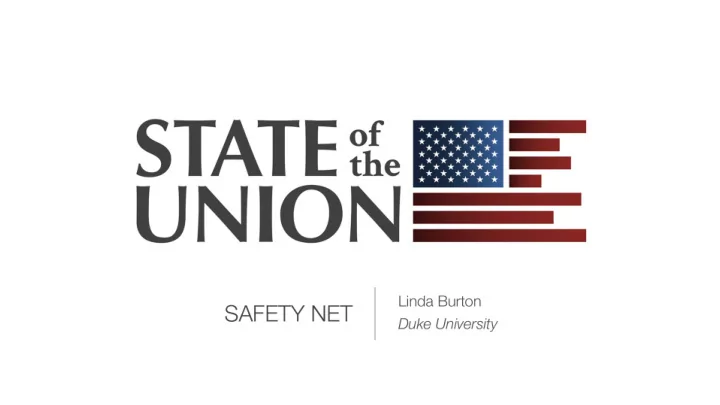

Gender and America’s Safety Net Reach Linda Burton, Marybeth Mattingly, Juan Pedroza, and Whitney Welsh CENTER ON POVERTY AND INEQUALITY
TWO QUESTIONS • Four key social insurance programs of disadvantaged Americans (safety net): public health insurance, the Earned Tax Credit (EITC); food stamps, and cash assistance. • What does population-based data tell us about gender and the safety? How wide is the divide and what does it mean? • The devil is in the details —the kin quagmire and “caretaker families”
What We Might Expect • We might expect safety net use to be greater among women for several reasons: • Poor women’s incomes are often further below the poverty threshold than men’s. • More so than men, poor women are often single parents. • Poor women’s social networks may facilitate safety net access .
APPROACH • Head of Household Reports of Safety Net Use in the 2017 Annual Social and Economic Supplement to the Current Population Survey • Receipt refers to 2016 calendar year • EITC, SNAP, TANF receipt and dollar amount • Receipt of Public Health Insurance • Universe restricted to heads of household living below the official poverty threshold
Percentage Receiving Safety Net Benefits in 2016, by Program & Family Type
Median Amount Received in 2016, by Program & Family Type
Men and Women Below Official Poverty Line in 2016, by Family Type 49% 60% Single without children Single with children 11% 37% Married without 12% children 5% Married without 17% children 9% Male Female
What else do we know? • Ethnographic research suggests men may have more difficulty accessing the safety net: • They do not have the same networks to connect them • Men’s safety net use is often more stigmatized • Men sometimes forego benefits so as not to reduce the mother’s safety net receipt • Incarceration factor • Stretched too thin - - kin quagmire and caretaker families
Key Take Aways • Because women have primary responsibility for the care of children, women use social safety net programs more often than men. • Gender differences in safety net use cannot be fully explained by gender differences in family type. The obstacles to engaging with the safety net are often greater for single fathers than single mothers, and single mothers are more likely to receive cash and food assistance. • Although some of these gender differences are rooted in differences in eligibility and could thus be straightforwardly addressed, others rest on gender norms and other cultural differences that especially stigmatize safety net use among men. • Keeping it relative: Context will have it’s say!
Recommend
More recommend